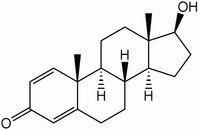Two Wisconsin veterinarians were recently sentenced for illegally manufacturing and distributing unapproved and misbranded animal drugs. The Wisconsin Department of Regulation and Licensing has temporarily suspended their licenses to practice veterinary medicine pending a formal hearing.
[CHART OMITTED]
Douglas M. Van Damme, D.V.M., and Clinton D. Anderson, D.V.M., who pleaded guilty last February, were sentenced April 13 in the U.S. District Court for the Western District of Wisconsin. Both received 15 months in jail and were fined $250,000.
In early 1986, manufacturers of approved animal drugs complained to FDA's Minneapolis district office about Van Damme's and Anderson's operation, according to Jeffrey Spykerman, district compliance officer. On April 30, 1986, agency investigators inspected the basement of Van Damme's home in Baldwin, Wis., where he and Anderson were illegally manufacturing the drugs.
The investigators found good manufacturing practice violations, including no drug stability testing, no batch production records, and inadequate labeling. In addition, the veterinarians had not applied for or received approval to market the drugs, nor had they registered with FDA as drug manufacturers. In July, the agency sent Van Damme and Anderson a letter warning them they were illegally manufacturing and selling unapproved drugs.
Van Damme responded to FDA by letter, stating that he and Anderson would no longer distribute drugs outside of the Baldwin Veterinary Clinic, which they owned.
But by May 1987, the two were back in business making and selling unapproved drugs under the business names "KTG Enterprises, Inc.," and "KTG Partners."
The drugs included tetracycline, Sulfatrimethoprim (SMZ-TMP), selenium-vitamin E, furosemide, ampicillin trihydrate, Neo-Meth Powder, hydrochlorothiazide, dexamethasone, sulfamethoxasole, clotrimazole, boldenone undecylenate, rifampin, Rifampin Dry Cow, neostigmine methylsulfate, griseofulvin, Repositol Progesterone, clenbuterol solution, clenbuterol granules, sodium cephapirin, ketoprofen, Baytril, and GNRH.
"Clenbuterol isn't approved for any use in animals or humans," Spykerman said. In fact, several people in Spain became seriously ill after eating liver from cows that had been treated with clenbuterol.
"Rifampin is an antibiotic that is approved to treat tuberculosis in humans," he said. Van Damme and Anderson were selling this drug to treat infections in cows, including mastitis, a common infection of a cow's udder.
Although FDA is not aware that any humans became ill after eating meat from animals treated with the unapproved drugs, Spykerman said, "our concern is that people would develop a tolerance to these drugs [after eating the meat from treated animals], making the drugs ineffective in treating human disease, or that drug-resistant bacteria might develop."
These KTG drugs were misbranded because the labels did not state the name of the manufacturer, packer or distributor, or failed to state adequate directions for use. In addition, because the drugs were manufactured without an approved new animal drug application, they had not been shown to be safe and effective.
According to court documents, between 1988 and 1991 Van Damme and Anderson distributed more than $1.7 million worth of adulterated and misbranded animal drugs between 1988 and 1990 to veterinary clinics in several states.
In 1992, FDA's Minneapolis district learned of the scope and methods of Van Damme's and Anderson's operation through interviews with employees and with KTG's customers.
The employees told investigators that the two veterinarians had stored illegal drugs above a suspended ceiling at their veterinary clinic to avoid detection by FDA. In addition, former customers said KTG used code numbers on its sales receipts to hide from FDA the identity of the drugs sold, Spykerman explained.
"They were intentionally doing these things to get around FDA," he said.
Investigators also learned that Van Damme and Anderson were illegally receiving bulk drugs from Germany and Spain, as well as several U.S. manufacturers.
On Oct. 3, 1992, after obtaining a warrant, agency investigators searched the Baldwin Veterinary Clinic. They seized clinic records and more than 50 kinds of adulterated and misbranded drugs, including ampicillin, clenbuterol (liquid and granules), clotrimazole, GNRH, lidocaine powder, and rifampin.
Seven months later, investigators obtained another warrant and, on May 26, 1993, searched the Kaleidoscope Inn, a bed-and-breakfast hotel owned by Anderson.
Investigators seized various drugs, including eight 1,000-gram packets labeled "Lidocaine HCl" and various other components, as well as 9,000 empty squeeze jets, 1,200 120-cc bottles, mixing equipment, and other storage containers.
On July 20, 1993, a Madison, Wis., grand jury returned a seven-felony-count indictment charging Van Damme and Anderson with manufacturing and distributing unapproved and misbranded animal drugs from 1986 through mid-1992.
On Feb. 9 and Feb. 11, respectively, Van Damme and Anderson pleaded guilty to one count of the indictment--failure to register a drug manufacturing establishment with FDA, with the intent to defraud and mislead.
COPYRIGHT 1994 U.S. Government Printing Office
COPYRIGHT 2004 Gale Group



